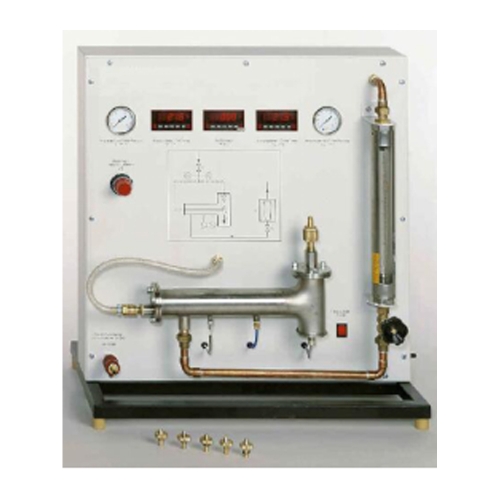AFF049 Characteristics Of Nozzles Teaching Equipment Hydrodynamics Experiment Apparatus
Learning Objectives / Experiments
– determining the critical pressure ratio
– demonstration of the “choking effect”
– determining flow velocity in the narrowest cross section
– measurement of the reaction or action force of the flowing fluid
– determine nozzle efficiency by thrust
Specification
[1] detect impact force or thrust at nozzle to determine the flow velocity and nozzle efficiency
[2] experiment layout A: measuring reaction force (thrust) of the fluid at the nozzle
[3] experiment layout B: measuring action force of the fluid at the baffle plate
[4] air intake adaptable according to the experiment layout
[5] distance between baffle plate and nozzle can be adjusted
[6] compressed air regulator for adjusting the pressure downstream of the nozzle
[7] needle valve on the flow meter for adjusting theback pressure
[8] measuring reaction or action force of the nozzle by deformation of the bending beam
[9] 5 nozzles with different contours (4 convergentdivergent, 1 convergent) and 1 baffle plate
[10] instruments: manometer and digital temperature display upstream and downstream of the nozzle, as
well as rotameter
Technical Data
Air consumption of the experimental unit
– compressed air: max. 10bar
– air consumption: approx. 5g/s
5 nozzles, brass
– 4 convergent-divergent
– 1 convergent
– diameter, all nozzles: 2mm
– length, divergent nozzles: 3,6 to 15,8mm
Compressed air regulator
– control range: 0…8,6bar
Measuring ranges
– temperature: 0…100°C
– pressure: 2x 0…10bar
– mass flow: 0,7…8,3g/s
– force: 0…2N
Dimensions and Weight
LxWxH: 750x450x810mm
Weight: approx. 27kg
Connections
230V, 50/60Hz, 1 phase or 120V, 60Hz/CSA, 1 phase
Compressed air max. 10bar, 250NL/min
